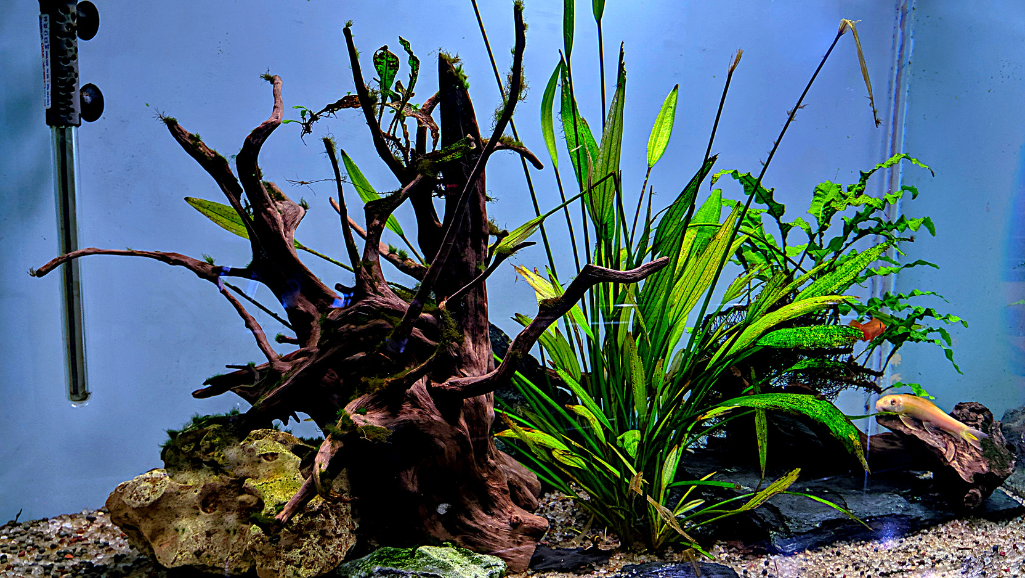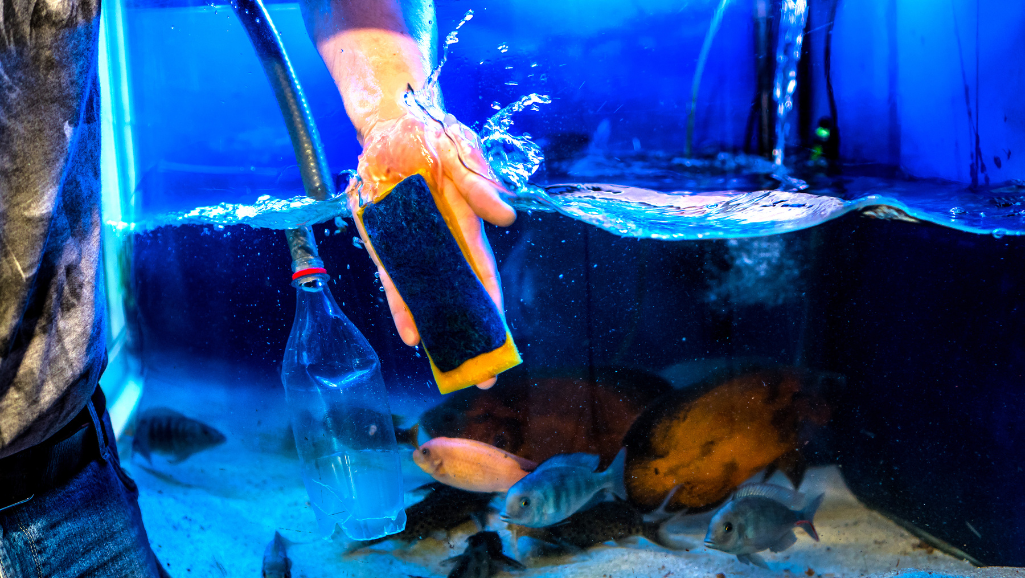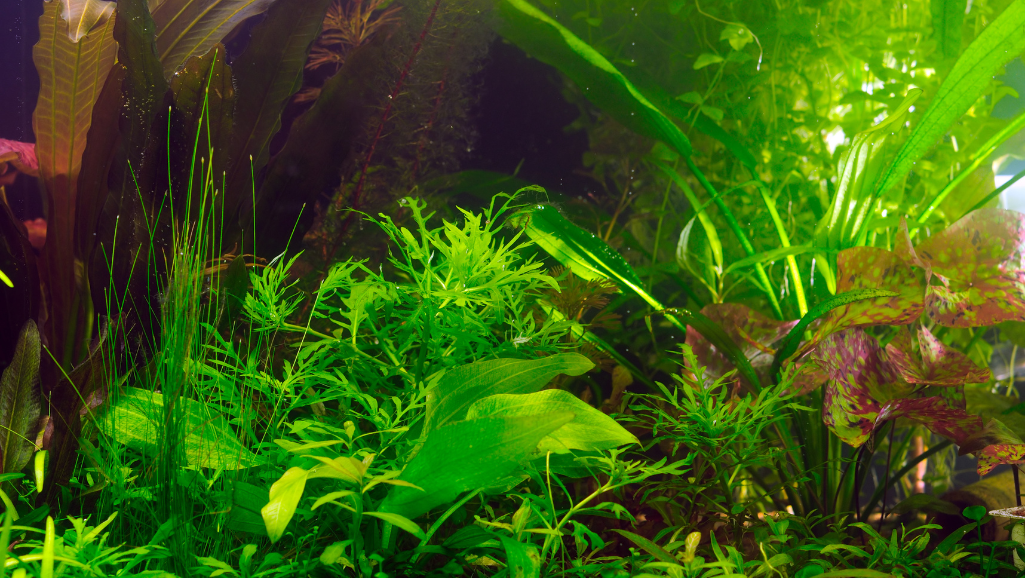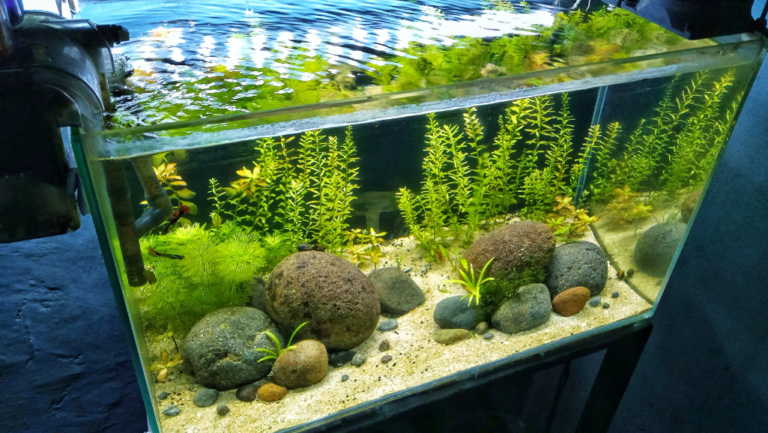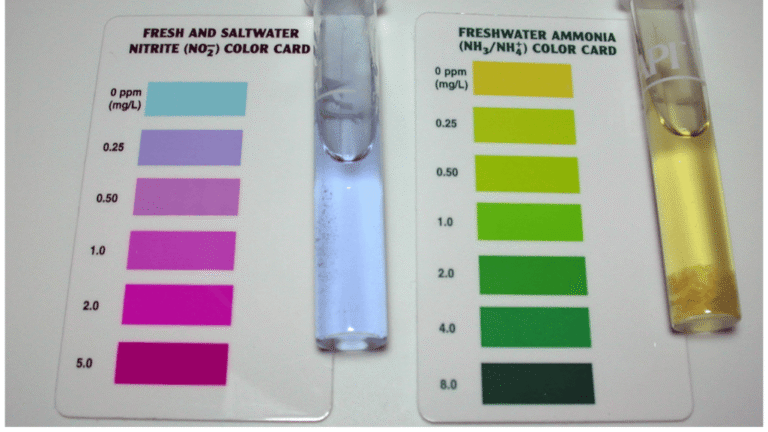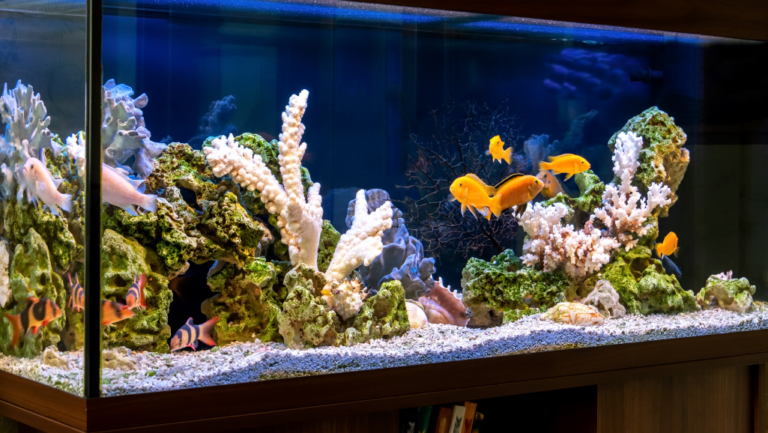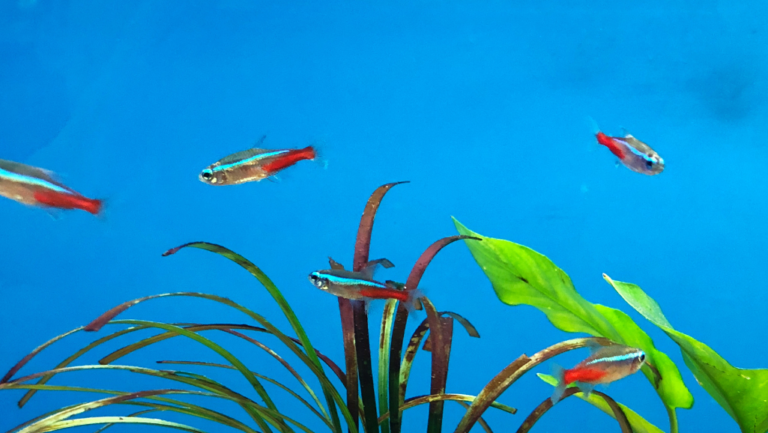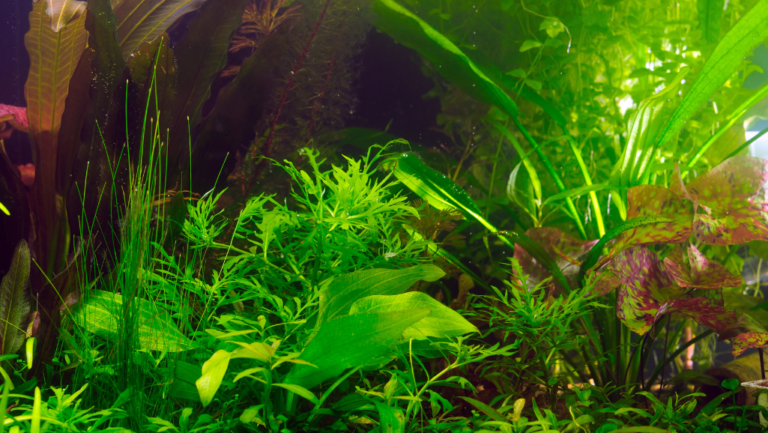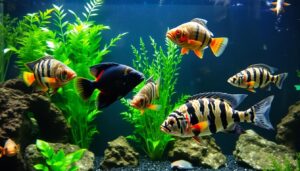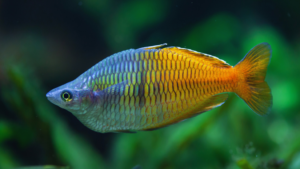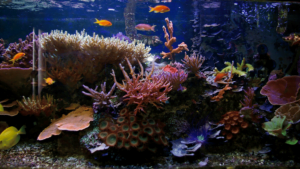Starting a small community tank can be an exciting journey for any beginner. Choosing the right fish is crucial to ensure a thriving aquatic environment. Many species are well-suited for smaller setups, but it’s essential to consider their adult size and compatibility with other community fish.
This guide will walk you through the basics of tank setup, selecting the right species, and maintaining a healthy ecosystem. Whether you’re setting up a 5-gallon or a 20-gallon aquarium, these tips will help you create a balanced and visually appealing space.
With expert advice and real-life examples, even novice aquarists can achieve success. From understanding the importance of adult size to ensuring proper light and water conditions, this guide covers everything you need to know.
Key Takeaways
- Choose fish that fit the size of your tank when fully grown.
- Opt for species that thrive in small community setups.
- Proper tank setup and maintenance are essential for success.
- Consider compatibility to avoid conflicts among fish.
- Even beginners can create a thriving aquatic ecosystem with the right guidance.
Introduction to Aquarium Fish Keeping
Aquarium fishkeeping has become a beloved hobby for many across the United States. It’s a rewarding activity that combines creativity, responsibility, and the joy of nurturing aquatic life. Whether you’re drawn to the vibrant colors of tropical fish or the calming presence of a well-maintained aquarium, this hobby offers something for everyone.
Choosing the right species is the first step toward long-term success. Beginners often find livebearers like guppies to be ideal due to their manageable adult size and stunning patterns. These small fish are hardy, adaptable, and perfect for smaller setups.
Proper care is essential to maintain a healthy environment. Regular water testing and maintenance ensure your aquarium thrives. Local fish stores can be invaluable resources, offering guidance on equipment, species selection, and troubleshooting common issues.
What started as a simple hobby has evolved into a year-round commitment for many enthusiasts. From understanding fish compatibility to mastering basic tank care, the journey is both educational and fulfilling. With the right approach, even beginners can create a thriving aquatic ecosystem.
For a detailed guide on setting up your first aquarium, check out this step-by-step resource.
Setting Up Your Aquarium for Success
Creating a thriving aquatic environment starts with the right setup. The tank you choose plays a critical role in the health and happiness of your fish. A properly sized and equipped aquarium ensures stability and reduces stress for your aquatic pets.
Selecting the Right Tank Size and Environment
The size of your tank directly impacts water quality and fish growth. For beginners, a 20-gallon tank is often recommended. It provides enough space for multiple species and allows room for error in maintenance.
Smaller tanks, like 10-gallon setups, can work but require more frequent water changes. Larger tanks offer better stability, as they dilute toxins more effectively. Always consider the adult size of your fish when choosing a tank.
Essential Equipment and Water Parameters
Equipping your tank with the right tools is essential. A filter rated for at least double the gallon capacity ensures efficient cleaning. For example, a 40-gallon filter is ideal for a 20-gallon tank.
Heaters are crucial for maintaining consistent water temperature. Aim for 5 watts per gallon to ensure proper heating. Regular water testing is also vital to monitor pH, ammonia, and nitrate levels.
Cycling your tank before adding fish is a must. This process establishes beneficial bacteria that break down toxins. It typically takes 1 to 3 months but ensures a safe environment for your aquatic pets.
For a detailed guide on setting up your first tank, check out this step-by-step resource.
Choosing friendly fishes for aquarium: What to Look For
Selecting the right aquatic companions is a critical step in building a harmonious tank. The right combination of color, size, and temperament ensures a visually appealing and peaceful environment. Understanding these factors helps create a thriving community of species that coexist well.
Color, Size, and Temperament Considerations
Color and pattern play a significant role in enhancing the aesthetic appeal of your tank. Vibrant species like neon tetras or cherry barbs add a splash of brightness. However, it’s essential to consider their adult size to avoid overcrowding. For example, tetras typically grow to about 1.5 inches, making them ideal for smaller setups.
Temperament is another crucial factor. Peaceful community fish like corydoras or platies are excellent choices for beginners. Aggressive species, such as some barbs, may disrupt the harmony of your tank. Always research the behavior of each species before adding them to your setup.
Understanding Fish Compatibility in a Community Tank
Compatibility is key to maintaining a balanced ecosystem. Fish with similar size and temperament are more likely to coexist peacefully. For instance, keeping tetras and guppies together works well because both are small and non-aggressive. On the other hand, mixing larger species with smaller ones can lead to predation or stress.
Group dynamics also matter. Many community fish thrive in groups of six or more. This reduces bullying and encourages natural behavior. For example, rasboras and rummynose tetras display vibrant colors and active swimming patterns when kept in larger groups.
For a detailed guide on selecting compatible species, check out this fish compatibility chart. It provides valuable insights into pairing fish that thrive together.
Freshwater Tropical, Coldwater, and Marine Options Explained
Exploring the diverse world of aquatic setups opens up a range of possibilities for enthusiasts. Whether you’re drawn to the vibrant colors of tropical fish or the simplicity of coldwater species, each type offers unique benefits and challenges. Understanding these differences helps you create a thriving environment tailored to your preferences.
Pros and Cons of Tropical and Coldwater Fishes
Freshwater tropical setups are popular for their stunning variety of species. Neon tetras and cichlids, for example, add vibrant colors and dynamic patterns to your tank. However, these setups require consistent water temperatures between 72 and 82°F, which means investing in a reliable heater.
Coldwater setups, on the other hand, are often easier for beginners. Species like goldfish thrive in cooler temperatures and don’t require heaters. This makes them a cost-effective addition to your home. However, coldwater tanks have a more limited range of species compared to tropical setups.
Starter Marine Fish Recommendations
Marine aquariums offer a stunning range of fish and invertebrates, but they come with higher complexity. Beginners should start with hardy species like clownfish or damselfish. These species adapt well to saltwater conditions and are relatively low-maintenance.
Keep in mind that marine tanks require specialized equipment, such as protein skimmers and precise water parameter controls. A 29-gallon tank is a good starting point for beginners, providing enough space for a small community of marine species.
For more insights on selecting the right fish for your setup, check out this detailed guide.
Popular Species for Beginner Aquarists
Diving into the world of aquatic pets offers endless opportunities for learning and enjoyment. Selecting the right species is crucial for creating a thriving and visually appealing setup. Whether you’re drawn to vibrant colors or peaceful behavior, there’s a perfect match for every beginner.
Top Freshwater Fish Selections
For those starting out, certain species stand out for their ease of care and adaptability. Guppies are a favorite due to their bright colors and manageable size, growing to just 1-2 inches. They’re also livebearers, making them an excellent choice for those interested in breeding.
Platies and mollies are other great options. Both are hardy, peaceful, and thrive in a variety of water conditions. Platies grow to about 3 inches, while mollies can reach up to 5 inches, so ensure your tank size accommodates their growth.
Livebearers, Tetras, and Corydoras Highlights
Livebearers like guppies and platies are ideal for beginners. They’re affordable, vibrant, and easy to breed. These species add life and color to any setup without requiring advanced care.
Schooling tetras, such as neon tetras, are another excellent choice. They grow to about 1.5 inches and thrive in groups of six or more. Their shimmering colors and active behavior make them a joy to watch.
For bottom dwellers, consider corydoras catfish. These peaceful species grow to 1-3 inches and help keep your tank clean. They’re social and do best in groups, adding both function and charm to your setup.
“Choosing the right mix of species ensures a balanced and harmonious environment.”
When selecting your aquatic companions, consider their adult size, temperament, and compatibility. For more insights on the best freshwater fish, explore this detailed guide. With the right choices, even beginners can create a thriving and beautiful aquatic ecosystem.
Expert Tips on Fish Introduction and Acclimation
Introducing new fish to your tank requires patience and precision to ensure their health and well-being. Proper acclimation helps them adjust to their new environment, reducing stress and preventing health issues. Whether you’re adding a single male or a group, following these steps will set the stage for a thriving aquatic community.
Steps to Properly Acclimate New Fish
Start by floating the sealed bag in your tank for 15-20 minutes to equalize the temperature. This prevents sudden temperature swings, which can shock your fish. Next, open the bag and gradually add small amounts of tank water every 5 minutes. This process, known as drip acclimation, helps your fish adjust to the new water parameters.
After about an hour, gently net the fish and release them into the tank. Avoid adding the bag water, as it may contain harmful substances. Monitor their behavior closely for the first 24 hours. Signs of stress, such as clamped fins or erratic swimming, indicate the need for adjustments.
Reducing Stress During Fish Transport
Transporting fish can be stressful, but proper techniques can minimize risks. Use a sturdy, insulated container to maintain stable temperatures. Adding a water conditioner like API STRESS COAT™ protects their delicate slime coats and reduces stress.
Once home, avoid feeding your fish for the first 24 hours. This allows their digestive systems to adjust and prevents overloading the biological filter. Observing their shape and fin condition can also provide insights into their stress levels.
“Careful acclimation is the key to long-term health and harmony in your tank.”
By following these expert tips, you can ensure a smooth transition for your new aquatic addition. Proper care during this critical period sets the foundation for a thriving and balanced ecosystem.
Maintaining a Healthy Aquarium Environment
Keeping your aquatic environment healthy requires consistent effort and attention to detail. A well-maintained tank ensures your fish thrive and your setup remains visually appealing. From routine cleaning to proper feeding, every step contributes to a balanced ecosystem.
Effective Tank Maintenance and Water Testing
Regular maintenance is essential for a healthy aquarium. Start with weekly tasks like cleaning the glass and vacuuming the substrate. This removes debris and prevents harmful buildup. For gravel, aim for 1.5 to 2 pounds per gallon to maintain a natural look and support beneficial bacteria.
Water changes are equally important. Replace 15-25% of the water every 1-2 weeks to stabilize pH and reduce nitrate levels. Heavily stocked tanks may require more frequent changes. Always use a dechlorinator to treat tap water before adding it to your setup.
Testing water parameters monthly is crucial. Monitor pH, ammonia, nitrite, and nitrate levels to ensure they stay within safe ranges. For example, ammonia and nitrite should always be at 0 ppm, while nitrate should remain below 40 ppm.
Essential Dietary and Care Practices
A balanced diet is key to your fish’s health. Feed them twice a day, offering only what they can consume in five minutes. Overfeeding can lead to water quality issues and health problems. Choose high-quality food tailored to your species’ needs.
Bottom dwellers like catfish and plecos play a vital role in algae control and substrate cleaning. These species thrive on sinking pellets or algae wafers. Ensure their diet includes enough fiber to support digestion.
Observe your fish’s behavior and growth. Adjust feeding schedules based on their activity levels and size increments, measured in inches. Healthy fish should display vibrant colors and active swimming patterns.
“Consistent maintenance and proper care are the foundation of a thriving aquatic ecosystem.”
By following these practices, you can create a stable and healthy environment for your aquatic companions. Regular upkeep not only enhances their well-being but also ensures your aquarium remains a beautiful centerpiece in your home.
Advanced Guidance for Future Tank Upgrades
Upgrading your aquatic setup is a natural progression for dedicated hobbyists. As your fish grow and your interest in the hobby deepens, expanding your tank becomes essential. A larger setup not only provides more space but also improves water stability and allows for a wider range of species.
When and How to Expand Your Aquarium
Recognizing the signs for an upgrade is the first step. If your fish appear crowded or stressed, it’s time to consider a larger tank. A bigger setup, such as a 40-gallon or 150-gallon tank, offers more room for swimming and reduces territorial disputes.
Increased size also enhances water quality by diluting toxins. This is especially important for adult fish, which produce more waste. Plan for additional equipment like a stronger filter and heater to accommodate the larger volume.
Transitioning to a new tank requires careful planning. Start by cycling the new setup using biomedia from your current tank. This reduces cycling time and ensures a safe environment. Gradually introduce your fish to the new space, monitoring their behavior closely.
Balancing older, larger adult fish with new, smaller additions is crucial. Ensure all species have compatible requirements to avoid conflicts. For example, mixing angelfish with smaller tetras may not work due to size differences.
Consider the overall shape and design of your new tank. A 5-foot-long setup provides ample swimming space, while partitions can create isolated chambers for breeding or species isolation. Proper planning ensures a dynamic and harmonious environment.
“A well-planned upgrade enhances both the health and beauty of your aquatic ecosystem.”
By following these strategies, you can successfully expand your setup while meeting the needs of all your aquatic companions. A larger tank not only accommodates more fish but also offers a rewarding challenge for dedicated hobbyists.
Conclusion
Building a thriving aquatic ecosystem starts with the right knowledge and tools. From selecting the right fish to setting up a balanced tank, every step matters. Proper maintenance, including regular water testing and a balanced diet, ensures your aquatic companions stay healthy and vibrant.
Visiting a local fish store can provide expert advice and live examples of species like livebearers or catfish. These resources help you make informed decisions and create a harmonious environment. A well-maintained aquarium is not just a hobby; it’s a living ecosystem that brings joy and relaxation.
Remember, success comes from patience and attention to detail. Whether you’re starting small or planning to expand, this guide offers the foundation for a rewarding journey. Explore additional resources to deepen your knowledge and evolve your skills over the years.

